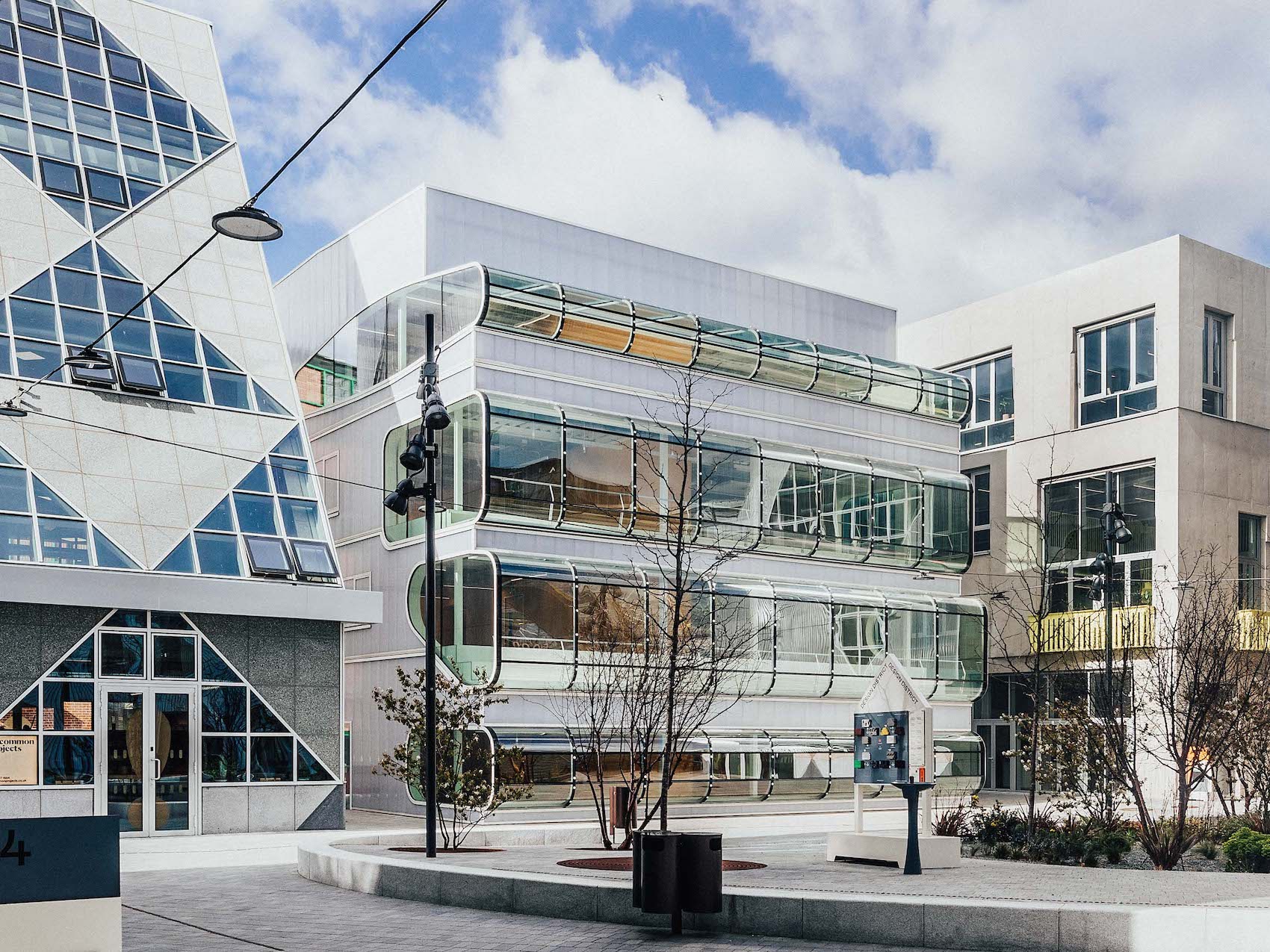Madrid-based practice SelgasCano has completed a visually-striking office building at London’s Design District as the creative neighbourhood celebrates its second birthday.
Photos
Taran Wilkhu
Designed by SelgasCano, Building B1 forms part of London’s Design District – the capital’s first permanent, purpose-built workspace for the creative industries located on Greenwich Peninsula. The visually-striking four-storey building includes more than 10,000-square-feet of open-plan office space and a generous ‘winter garden.’
Constructed from bold yellow-painted structural steel, a spiralling series of stepped landings runs from ground level to the fourth floor, creating spaces to pause and moments of interest. By contrast, a series of small pods located in the centre of the plan provide building users with more enclosed, private spaces in which to meet, work and socialise.
With views in all directions, each of the floor plates is organised around a curved central core and connected to the winter garden through a glazed walkway. The curved windows on the front of the building are intended create a strong connection with the main square, keeping the building occupants in touch with the sunlight and their immediate surroundings, while allowing those outside to glimpse the creative work taking place within. The curved glass units echo SelgasCano’s other Design District building: the distinctive, caterpillar-like Canteen located opposite Building B1.
The scheme’s curvaceous silhouette and distinctive materials, including polycarbonate cladding and vivid yellow-painted steelwork, contrast with the rectilinear geometries and sharp lines of several of its neighbours, including 6A Architects’ angular A2 and B2 projects, and David Kohn’s grid-fronted B4 building.
The completion of B1 coincides with Design District’s second birthday and the release of its Impact Report, commissioned from built environment research and analytics agency, Social Life. This explores the impact of Design District on its tenant businesses, and its success in nurturing growth and inspiring innovation amongst the creative industries two years on from its launch. Key findings include, 90 per cent of tenants have either grown or maintained the size of their teams, 83 per cent of tenants cite the desire to be part of a creative community as their motivation for moving to Design District, and 61 per cent directly attribute an increase in quality of life to the standard of Design District’s amenities.
Source: Architecture Today





